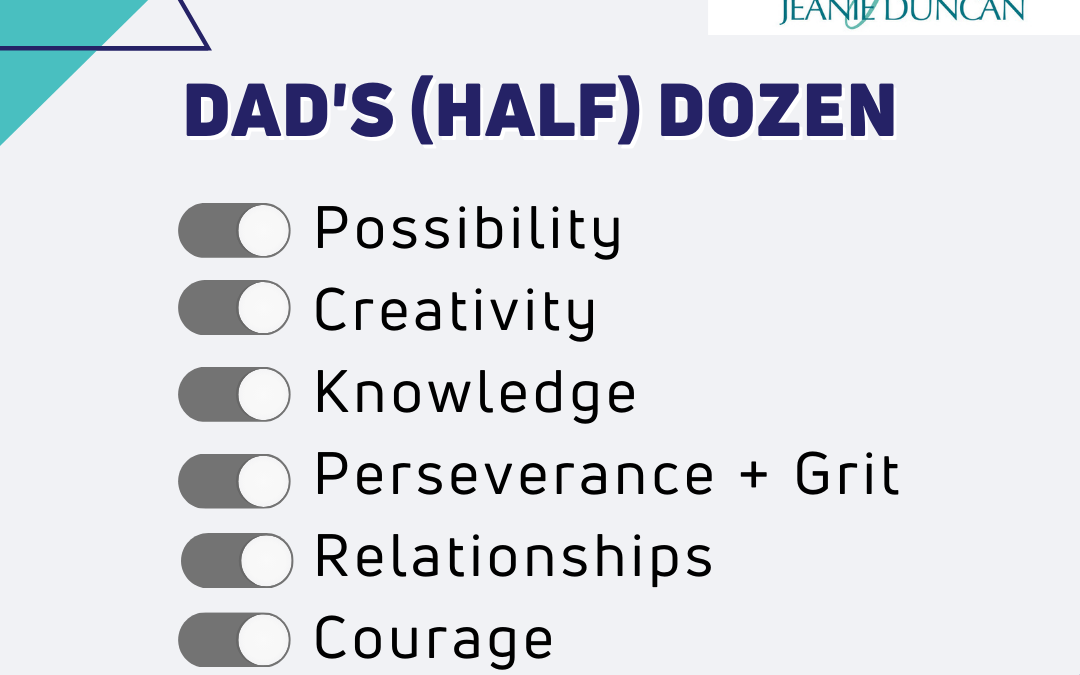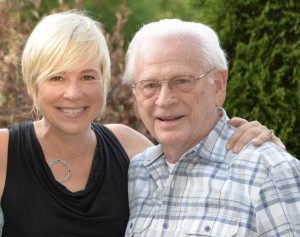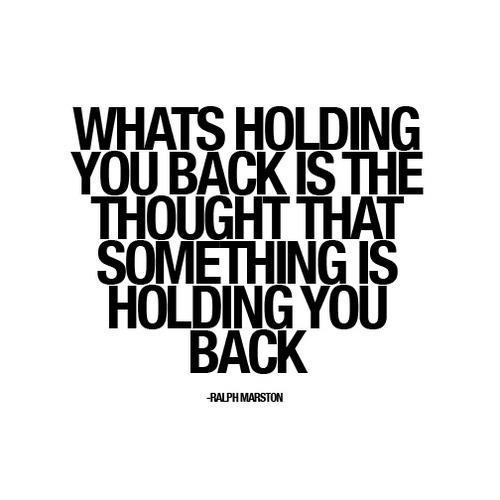
Jun 22, 2021 | Entrepreneurship, Gratitude, Leadership

My dad was a gentle giant – not physically, but figuratively speaking in his heart, spirit, and all-around “way.” There was nothing he couldn’t do. I lost him to Alzheimer’s a couple of years ago. It’s such a dreadful disease – slowly chipping away at your loved one until they’re only a shell of who they once were. You’re stuck grieving your loved one while they’re still living. In his slow ten-year fade, we found joy in going on long walks where we’d talk about all the things. I’d seek his business advice, and he would teach me through his stories.
My mom and dad were business owners – both farming and a retail jewelry business. They had a jewelry store in the city, and later moved it into our home, where dad designed and created custom fine jewelry, while mom took care of customers and the finances. I still smile today thinking about how these two enterprises couldn’t be more different from one another, yet they so perfectly reflected who he was: artist, builder, nature lover, enterpriser. He’d go from wrangling cows and horses by day to delivering his beautiful and intricate jewelry designs for customers in the evenings.
 I was the youngest of three kids, and we all worked in the businesses, from chores of taking care of the farm animals and the property to stringing pearl necklaces and sorting gemstones. Like most kids, I didn’t realize it then, but I was absorbing so many lessons and shaping qualities that would later serve me well.
I was the youngest of three kids, and we all worked in the businesses, from chores of taking care of the farm animals and the property to stringing pearl necklaces and sorting gemstones. Like most kids, I didn’t realize it then, but I was absorbing so many lessons and shaping qualities that would later serve me well.
It’s in starting and running my own business that I think of my dad most today and feel his influence. He served as a huge impetus. I could write so much about him, but I’ll stick with my “Dad’s (half) Dozen” for now. It’s these qualities that made him such a beautiful human being, encouraging mentor, and humble, effective leader…for which I’m so grateful.
Dad’s (half) Dozen
- Possibility: The quote, “If you can dream it, you can do it” is attributed to Walt Disney, but it could just as easily be my dad. The man knew no limitations and believed that anything was possible. He started with nothing (in fact less than nothing) and built businesses, made an abundant life for his family, and taught us that we could do the same.
- Creativity: I so appreciate and value the creative human being my dad was – jewelry designer, landscape architect, master gardener, home and barn builder, and more. If he saw something he wanted or something he desired for his family, he went after it, most always doing the design and work himself.
- Knowledge: Building on his creativity and infinite resourcefulness, if there was something he wanted and didn’t know how to do it, he learned how and made it happen. It seemed like there was nothing he couldn’t do. I remember the time he put in a lake on our farm. A natural stream ran through our property, and he’d always wanted a lake. So, he drew up the plans for it, bought a backhoe and bulldozer, built it, then sold the equipment for more than he paid for it. And best of all, he stocked it with bass, brim, and catfish which made for hours of fun fishing from our paddleboat. My dad…
- Perseverance and Grit: Dad was ambitious and enterprising and knew that success came with pure hard (and smart) work and the ability to stick with it through all the ups and downs. I couple these two because it makes me think of Angela Duckworth’s book, “Grit: the power of passion and perseverance.” It describes my dad to a “T.” In it, she defines the key characteristics of courage, conscientiousness, long-term goals and endurance, resilience, and excellence. Ok…if I could only have one of dad’s traits, it might be this one!
- Relationships: In life and work, my parents were all about relationships. “We do business with those who do business with us,” they would often say. They built a great following of customers with this mantra and generously cultivated loyalty. On our farm, we had a small but prolific orchard of pecan, apple, and peach trees, a vegetable garden, and several dozen rose bushes. Every week, dad would harvest whatever was in season, arrange vases and gift bags, and make their “Friday rounds” delivering gifts to clients, customers, and vendors. He was famous for it!
- Courage: One of my favorite quotes comes from John Wayne, who was adored by my father, “Courage is being scared to death and saddling up anyway.” This should have been on display in dad’s store; I remember him most for this kind of boldness. I’m sure he had plenty of doubts and was even terrified at times, but he did all the work, he trusted, and took the leap. And without ever saying a word, he taught me how to do the same.
 Hi, I’m Jeanie Duncan. I work with individuals and organizations as a transformation partner to help them unlock their Truth, discover authentic value, and create meaningful impact in the world. I believe when we are truly aligned with our purpose, we can live and perform at our highest potential. With over 25 years of experience as an executive, CEO, consultant, and coach, I offer strategic, knowledgeable, and experienced guidance for those who are ready to take the courageous leap toward true transformation.
Hi, I’m Jeanie Duncan. I work with individuals and organizations as a transformation partner to help them unlock their Truth, discover authentic value, and create meaningful impact in the world. I believe when we are truly aligned with our purpose, we can live and perform at our highest potential. With over 25 years of experience as an executive, CEO, consultant, and coach, I offer strategic, knowledgeable, and experienced guidance for those who are ready to take the courageous leap toward true transformation.

May 24, 2016 | Leadership

Leaders often fall into the trap of thinking that working harder will get them ahead—and into that next leadership role. Hard work will only take you so far, though. The strongest leaders are self-aware and know how to use their strengths strategically in a way that is both to their own advantage and benefits their organization and its people.
As I wrote about in The Brand of You, you’re constantly making impressions on others, from what you say or do to how you react and interact. And every impression you make can be an asset or a liability as you engage in the tasks and roles of leadership.
It’s essential that you become a self-aware leader so that you can make the most of the opportunities you have to influence others. Self-awareness is a vital, yet often-overlooked quality among other, more prominent assets like vision, strategic thinking, and influence. You never want to be the last one to know about a weakness or a missed opportunity to leverage your strengths. In fact, self-awareness can be the deciding factor in your success as a leader.
So, what do I mean by being self-aware?
- Being aware of your own strengths and weaknesses. When you know your assets (strengths) you can bring them to bear appropriately; when you have a clear view of your weaknesses and/or behaviors that create tension or divide, you can mitigate the negative impact or derailment.
- Having an ability to read others – being able to assess their styles and preferences, as well as their strengths and weaknesses. This isn’t about manipulating other people, but rather about paying attention and tuning in to those around you. Knowing others’ styles and preferences helps not only when it comes to influencing others, but also when it comes to putting together a high-performing team. Success depends on your ability to recognize strengths as well as potential deficits so that you can best align your talent with the right roles and responsibilities. (This skill is also helpful in hiring people with complementary abilities and leveraging the collective strengths of the team.)
- Paying attention to your behaviors and the effects of what you say or do on others. Do you attempt to motivate and inspire people to achieve their goals? Do you try to advocate for your ideas because you’re convinced they’re right? Do you attempt to negotiate a bridge between competing opinions? We all have our own natural preferences and styles of influencing others, managing conflict and communicating. One thing to keep in mind is how the same behavior might have different impact on different people. It’s a good idea to check in regularly and seek feedback from those with whom you work.
Here are a few good tips for increasing your self-awareness and developing yourself into a more effective leader:
- Pay attention. Notice your behavior and the impact it has on others.
- Complete instruments that reveal your personality type and natural preferences (for example, the MBTI and 360 assessments). Work with an individual certified in interpreting those results who can help you draw connections and lift out insights along with recommending developmental tools.
- Find an executive leadership program or experiential learning program that has a strong coaching component emphasizing your personal style.
- The next time you lead a project or team meeting, ask a colleague to observe a particular behavior or two on which you’d like feedback. Afterward, seek his or her thoughts on the situation, your observable behavior, and the impact it had on them, others, or the task at hand.
Here’s a word of caution: Being (or becoming) self-aware isn’t the whole story. I’ve found that the most effective, most fulfilled leaders are committed to leveraging their strengths and mitigating their weaknesses. Even more? They check their egos and acknowledge that it takes a team of individuals with diverse and complementary strengths and talents to collaborate and achieve goals.
There’s a great quote in a Harvard Business Review article by Anthony K. Tjan, co-author of the book Heart, Smarts, Guts, and Luck: “The trinity of self-awareness is to know thyself, improve thyself, and complement thyself.”
It takes an array of competencies to lead people and organizations—from the abilities to communicate well and delegate effectively to a great capacity for turning strategic thinking into tactics that get the desired results. I encourage you to continue developing yourself in those areas, but remember: Self-awareness is the key to your success as a leader. Understanding your own abilities and natural tendencies is the first step in being able to harness the talents and skills of others.
See my other related blog posts:
 About Jeanie Duncan: Jeanie is President of Raven Consulting Group, a business she founded that focuses on organizational change and leadership development in the nonprofit sector. She is a senior consultant for Raffa, a national firm working with nonprofit clients to lead efforts in sustainability and succession planning, executive transition and search. Additionally, Jeanie serves as adjunct faculty for the Center for Creative Leadership, a top-ranked, global provider of executive leadership education.
About Jeanie Duncan: Jeanie is President of Raven Consulting Group, a business she founded that focuses on organizational change and leadership development in the nonprofit sector. She is a senior consultant for Raffa, a national firm working with nonprofit clients to lead efforts in sustainability and succession planning, executive transition and search. Additionally, Jeanie serves as adjunct faculty for the Center for Creative Leadership, a top-ranked, global provider of executive leadership education.

Mar 18, 2014 | Leadership
 Authenticity is not something we have or don’t have. It’s something we practice – a conscious choice each day of how we want to live, show up, and be real in who we are. It’s about letting our true selves be seen. And for me, it can feel resonant, exhilarating, and terrifying all at once.
Authenticity is not something we have or don’t have. It’s something we practice – a conscious choice each day of how we want to live, show up, and be real in who we are. It’s about letting our true selves be seen. And for me, it can feel resonant, exhilarating, and terrifying all at once.
When I think about authenticity, I think about how we are drawn to deeply real people. In my work as a leadership development educator and facilitator, I often see this in the classroom. Just the other day, my co-facilitator was delivering a part of our program on organization change. He shared a personal story about leading a major change initiative for an international Fortune 100 company. As the group listened, I imagined that some fully expected an account of how well it went – of how he did all the right things, executed critical steps in perfect text-book form, and everyone came along with the change.
While some things did go well, much of what he shared was about the missteps…of what went wrong, what he wish he’d done differently, and what he learned from the complex navigation of change across a large global company with competing divisions, goals, and priorities.
What I witnessed in our participants was a building in the level of engagement, belief, and trust. This guy could have told his story so differently. He could have pointed out the positives and insulated himself and his leadership by jumping over the tough spots and failures. To do so would have created a divide with the participants and resulted in a missed opportunity to connect and exhibit vulnerability.
Before writing this post, I reviewed in my mind the characteristics I’ve observed in the most authentic people I’ve met. Most of the qualities come directly from being rather than doing. Here’s my list:
- Knowing yourself and being comfortable in your own skin
- Being vulnerable – Letting go of what people think and embracing who you are
- Having courage – Being willing to move out of your comfort zone, take risks, and play it unsafe
- A willingness to admit to and learn from failure
- Being honest – Choosing being real over being liked
- Compassion
- Gratitude
- Expressing your own creativity
What characteristics make your authenticity list? How do you recognize if you are accessing your own authenticity?
“To be nobody-but-yourself in a world which is doing its best, night and day, to make you everybody-but-yourself means to fight the hardest battle which any human being can fight – and never stop fighting.” E. E. Cummings
photo credit: Ara Pehlivanian via

Mar 11, 2014 | Leadership, Transition & Change
In my latest blog post (“Leading with Compassion and Authenticity,” February 18) I wrote about a favorite leadership book, “Leading with Authenticity in Times of Transition” by Kerry Bunker and Michael Wakefield. As a continuation of that post, I want to share the specific leadership competencies highlighted in the text that are critical for leaders navigating the complex challenges of transition. These competencies are presented as pairs (representing both the structural and people side) and graphically displayed as a wheel to demonstrate their interrelatedness and the need for balance.

Bunker and Wakefield use the image of a bicycle wheel to describe the leadership competencies, reflecting that each spoke needs to be tightened or loosened to the right tension. Otherwise, there will be strain on the other spokes, pulling the wheel out of alignment. Six spokes represent the structural competencies, and six the people-related competencies. If a leader devotes an overabundance of energy to any one competency, s/he runs the risk of skewing the opposite and pushing the wheel out of true, creating undue strain on the trust needed to lead effectively. The key is to find appropriate ways to work with both sides that are authentic to the leader and avoid swinging dramatically from one side to the other.
I find this resource very helpful in conceptualizing the core elements important to navigating change and transition as well as the need for balance among them. Most leaders are quite skilled at dealing with change and solving problems from the structural side of leadership – the plan, rationale, data, and measurements. Posing a much greater challenge for most is connecting to the people side of change – the emotions, discomfort, letting go, and rebuilding. Central to it all is trust, without which success in transition cannot exist.
Consider this example: A nonprofit arts organization had recently undergone a strategic planning process that included extensive community input data gathering. This led to a reshaping of priorities and key areas of focus for the organization, which re-defined its core lines of business. As a result, the organization ceased two primary areas of its operation. From this redefining, the organization aligned its leadership, resources, business strategy, and culture to support this new model. Among other things, the action led to a redesign and reduction in both board and staff leadership. By any measure, this was substantial change to this agency.
A true test for the organization was how it dealt with the more emotional side of the human elements of transition. While they handled the mechanics of the change well: strategy, planning, gathering community input, and defining core areas of focus and lines of business, the organization fell short in leading the more human dynamics of the transition: allowing for time and space for emotional processing, feeling discomfort, dealing with resistance, and appreciating differences in how people cope with change and taking those perspectives into account.
I see this frequently with the organizations and executives with whom I work. Strategic planning processes like these take a lot of time, effort, and energy. When a plan is done, it’s easy to feel like you’ve reached the finish line. It’s much harder to realize you’re only half or two-thirds finished, and that a critical component of your work is yet to be done – addressing the more sensitive people issues and empowering a team to embrace the change and help shape and lead the future.
As Bunker and Wakefield note, “change initiatives often break down because people stall somewhere during the transition.” Ignoring or falling short in this area will greatly impact the overall success of a transition. With the organization example above, the ‘less than ideal’ handling of the human elements created a turbulence that was felt for years after. These missteps are painful to recover from.
A highly skilled leader lives through the process of transition with others in a genuine and authentic way. They help their people flex and adapt, and foster their ability to contribute in new and meaningful ways. Here’s an overview of the twelve competencies:
Catalyzing Change versus Coping with Transition
Catalyzing Change is championing an initiative or significant change. A leader who is skilled at catalyzing change consistently promotes the cause, encourages others to get on board, and reinforces those who already are. Such leaders are highly driven and eager to get others engaged in new initiatives.
Coping with Transition involves recognizing and addressing the personal and emotional elements of change. Leaders who are able to cope with transition are in touch with their personal reactions to change and transition and make use of that emotional information. They lead by example.
Sense of Urgency versus Realistic Patience
Sense of Urgency involves taking action quickly when necessary to keep things rolling. Leaders who have a strong sense of urgency move fast on issues and accelerate the pace for everyone. They value action and know how to get things done.
Realistic Patience involves knowing when and how to slow the pace to allow time and space for people to cope and adapt. Leaders who display realistic patience appreciate the fact that people learn and deal with change differently and do not judge them based on their own styles, preferences, or capabilities.
Being Tough versus Being Empathetic
Being Tough denotes the ability to make difficult decisions about issues and people with little hesitation or second-guessing. Leaders who are comfortable and secure with themselves can display toughness; they’re not afraid to take a stand in the face of public opinion or strong resistance.
Being Empathetic requires taking others’ perspectives into account when making decisions and taking action. Empathetic leaders try to put themselves in other people’s shoes; they’re able to enhance their own perspectives by considering the views of others.
Optimism versus Realism and Openness
Optimism is the ability to see the positive potential of any challenge. Leaders who exude optimism can communicate and convey that optimism to others.
The combination of Realism and Openness denotes a grounded perspective and a willingness to be candid. Leaders who practice this competency are clear and honest about assessing a situation and the prospects for the future. They are candid in communicating what is known and not known. When managers exhibit realism and openness, they speak the truth, don’t sugarcoat the facts, and are willing to admit personal mistakes and foibles.
Self-Reliance versus Trusting Others
Self-Reliance involves a willingness to take a lead role and even to do something yourself when necessary. Self-reliant leaders have a great deal of confidence in their skills and abilities and are willing to step up and tackle new challenges.
Trusting Others means being comfortable with allowing others to do their part of a task or project. A leader who trusts others is open to input and support from colleagues and friends. Such leaders respect others and demonstrate trust through a willingness to be vulnerable with them.
Capitalizing on Strengths versus Going Against the Grain
Capitalizing on Strengths entails knowing your strengths and attributes, and confidently applying them to tackle new situations and circumstances. A leader who knows how to capitalize on strengths trusts the abilities that have generated success, rewards, recognition, compliments, and promotions in the past and uses them in new situations.
Going Against the Grain entails a willingness to learn and try new things, even when the process is hard or painful. Leaders who can go against the grain are willing to get out of their comfort zones. They are willing to tolerate discomfort if it leads to learning.
I don’t know about you, but when I read these competencies, I see that there are some inherent conflicts between them. In the face of change and turmoil, it’s interesting that people look for those who are simultaneously strong and vulnerable, heroic yet open, demanding while compassionate. Leading well often feels like an impossible balancing act. It can be exhausting!
For me, I think it’s most about knowing yourself as a leader. Knowing what is genuinely, authentically you and applying that consistently and well over time. And when you have those critical learning moments, take the new discoveries and further polish and refine your leadership skills.

photo credit: left-hand via photopin cc

Apr 28, 2013 | Intention

A Raven Reflection on a shared blog post from empowerlounge.com April 25, 2013
Do you have an inner voice full of negativity? Quietly nattering at you at every turn, asking you what business you have thinking you can make this successful? That you aren’t smart enough, gorgeous enough or hip enough to accomplish your goals? Studies have proven that it IS possible to turn that voice around, or even off. A mirror can help. Stand in front of a mirror and look yourself in the eye. Pick a phrase that is a direct hit to your inner critic. For example “I am enough” or “I am a successful business woman!” Stick these positive affirmations on your mirror so you see them daily!
Include in your daily routine:
- Knocking 3 things off your priority list to build confidence and create momentum
- Reading inspirational quotes and magazines (and Empower Lounge!)
- Calling or gathering with positive, supportive peers
- Getting outside, it works like magic every time.
- Making yourself comfortable with failure! It’s the one thing we all have in common, happens to the best of us and we’re stronger and smarter because of it!
~ ~ ~ ~
This blog post really hit home for me. Can you relate?
Just earlier this week, I had a session with my coach. I was grumbling about a task that was going to be really difficult and time consuming when she jumped in “Really? Who says?”
A puzzled look came over my face and I replied, “Well everyone says it is.” She countered “What if it’s not? What perspective would you like to have? What if it’s easy? What if it’s fun?”
That simple question “What perspective would I like to have?” stopped me in my tracks. I hadn’t even done this task before and already I was approaching it as hard, difficult, and time consuming. How excited do you think I was to get started? You guessed it.
Now, after a few days of marinating on that powerful thought, I’ve approached my task with a new and positive attitude, come up with fresh ideas, and experienced forward movement in getting started on this new work. I’m reminded that I am always in choice…for how I respond, react, and approach things in my every day.
Our thoughts create our reality. How are you shaping your thoughts today?
Jeanie is President of Raven Consulting Group, a business she founded that focuses on organizational change and leadership development in the nonprofit sector. She is a senior consultant for TransitionGuides, a national firm working with nonprofit clients to lead efforts in sustainability and succession planning, executive transition and search. Additionally, Jeanie serves as adjunct faculty for the Center for Creative Leadership, a top-ranked, global provider of executive leadership education.


 I was the youngest of three kids, and we all worked in the businesses, from chores of taking care of the farm animals and the property to stringing pearl necklaces and sorting gemstones. Like most kids, I didn’t realize it then, but I was absorbing so many lessons and shaping qualities that would later serve me well.
I was the youngest of three kids, and we all worked in the businesses, from chores of taking care of the farm animals and the property to stringing pearl necklaces and sorting gemstones. Like most kids, I didn’t realize it then, but I was absorbing so many lessons and shaping qualities that would later serve me well. Hi, I’m Jeanie Duncan. I work with individuals and organizations as a transformation partner to help them unlock their Truth, discover authentic value, and create meaningful impact in the world. I believe when we are truly aligned with our purpose, we can live and perform at our highest potential. With over 25 years of experience as an executive, CEO, consultant, and coach, I offer strategic, knowledgeable, and experienced guidance for those who are ready to take the courageous leap toward true transformation.
Hi, I’m Jeanie Duncan. I work with individuals and organizations as a transformation partner to help them unlock their Truth, discover authentic value, and create meaningful impact in the world. I believe when we are truly aligned with our purpose, we can live and perform at our highest potential. With over 25 years of experience as an executive, CEO, consultant, and coach, I offer strategic, knowledgeable, and experienced guidance for those who are ready to take the courageous leap toward true transformation. 


 About Jeanie Duncan: Jeanie is President of Raven Consulting Group, a business she founded that focuses on organizational change and leadership development in the nonprofit sector. She is a senior consultant for Raffa, a national firm working with nonprofit clients to lead efforts in sustainability and succession planning, executive transition and search. Additionally, Jeanie serves as adjunct faculty for the Center for Creative Leadership, a top-ranked, global provider of executive leadership education.
About Jeanie Duncan: Jeanie is President of Raven Consulting Group, a business she founded that focuses on organizational change and leadership development in the nonprofit sector. She is a senior consultant for Raffa, a national firm working with nonprofit clients to lead efforts in sustainability and succession planning, executive transition and search. Additionally, Jeanie serves as adjunct faculty for the Center for Creative Leadership, a top-ranked, global provider of executive leadership education.




Recent Comments